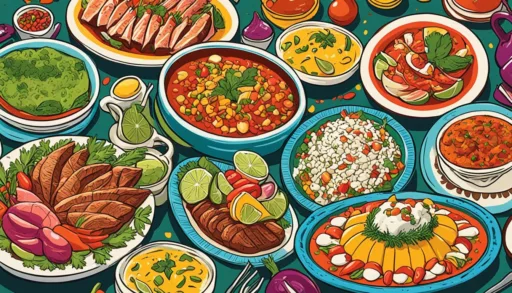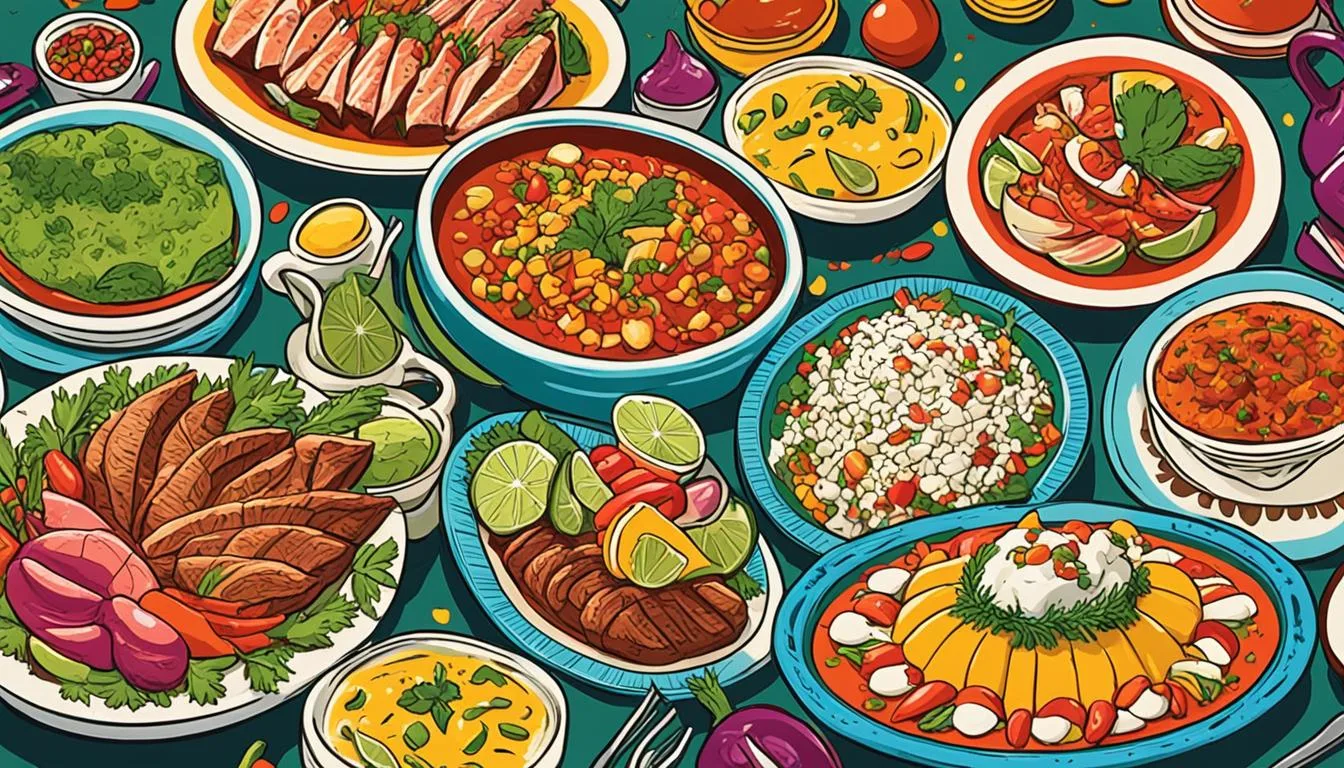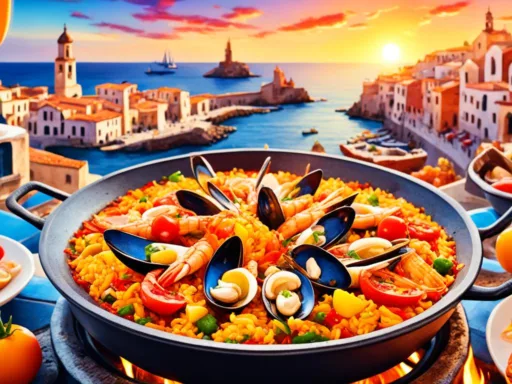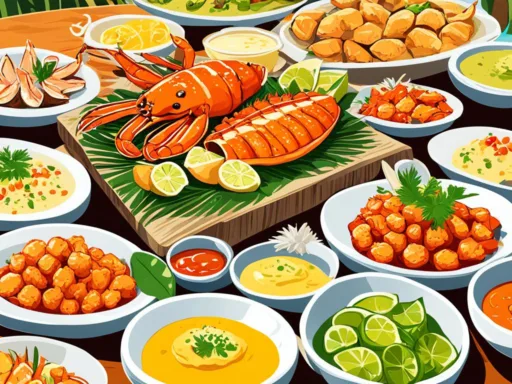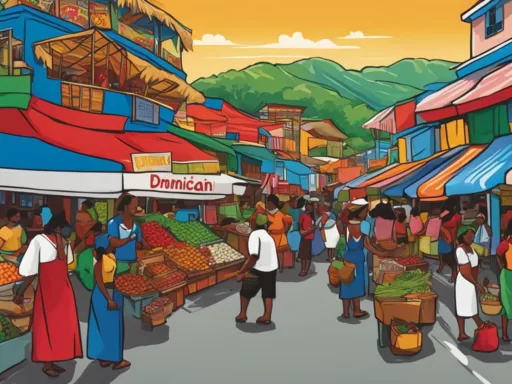While the majestic Galapagos Islands and staggering heights of the Andes are well-known jewels of Ecuador, a surprising allure lies in the stunning variety of its culinary landscape. In a captivating blend of flavors that extend beyond borders, Ecuadorian gastronomy has embraced a staggering 600 traditional dishes, a testament to the complexity and wealth of the country’s cuisine. From the hearty stews of the highlands to the vibrant ceviches of the coast, traditional recipes from Ecuador tell stories of cultural fusion and biodiversity that are as rich and varied as the country’s landscapes.
The acclaim of best food in Ecuador does not hail solely from the palates of locals; it has been whispered on the tongues of international gourmands and critics, who have begun to champion Ecuador as a revolutionary culinary tradition. Embark on a voyage where each course is a destination, and every bite an exploration through the astonishingly diverse menus that Ecuador has to offer.
Key Takeaways
- Ecuador boasts over 600 varieties of traditional recipes, showcasing an immense culinary tradition.
- The country’s culinary tradition reflects its rich natural biodiversity and cultural heritage.
- Ecuadorian food is gaining international recognition among food aficionados and critics alike.
- Exploring the best food in Ecuador allows travelers to experience a slice of the country’s history and culture.
- The intermingling of native traditions and global influences has propelled Ecuadorian gastronomy onto the world stage.
An Introduction to Ecuador’s Diverse Culinary Landscape
Embracing the essence of Ecuadorian Cuisine Discoveries, one steps into a realm where every town, mountain, and coastline serves as the stage for an array of authentic Ecuadorian dishes. This rich culinary heritage boasts not only an abundance of flavors but also an immersive history that tantalizes the taste buds of those eager to explore the gastronomic wonders of South America.
The Ecuadorian kitchen, a true mélange of the environment’s generous offerings, derives its core ingredients from the nation’s diverse geography. The fertile Andean highlands yield an incredible variety of cereals, while the Pacific ports provide a dizzying array of seafood, and the Amazon rainforest presents exotic fruits that form the backbone of traditional recipes from Ecuador.
- A closer look at the popular dishes in Ecuador reveals Ceviche, with its citrus-infused seafood, climbing the ranks as a local favorite.
- Llapingachos, hearty potato cakes, serve as a comforting reminder of the nourishing Andean fare.
- Crispy Guagüitas (roast guinea pig) highlight the integration of ancient traditions into modern dining tables across the country.
These traditional recipes are more than meals; they are storied experiences, shaped by a cultural confluence that dates back centuries. Every sip of Canelazo, a warming spiced beverage, and each bite of a Humita, a steamed corn delicacy, encompass tales of indigenous rituals, Spanish colonial influence, and Afro-Ecuadorian heritage to form a vibrant picture of Ecuadorian culinary diversity.
For a genuine undertaking through the tapestry of Ecuador’s gastronomy, one must dive into the traditional kitchens, explore the local markets, and dine at the humble canteens that hold the secrets to these time-honored dishes. Let the journey of taste begin!
Ecuador’s Gastronomic Emergence on the Global Stage
Ecuadorian culinary traditions have taken center stage in the global food scene, marking a significant moment for this equatorial nation’s rich and diverse tapestry of flavors. Bursting onto the international culinary arena, Ecuador’s blend of traditional recipes and innovative gastronomy paves the way for a dynamic food narrative.
Chef Pía Salazar’s Journey to Becoming The World’s Best Pastry Chef of 2023
With the taste of triumph still lingering on her latest dessert creation, Chef Pía Salazar represents the pinnacle of Ecuador’s gastronomic ascent. A native of Cuenca, Salazar has redefined dessert elegance, masterfully balancing traditional tastes with contemporary flair at her renowned Quito patisserie, Nuema. Her commitment to quality and innovation has not only brought her the title of The World’s Best Pastry Chef of 2023 but also honors the legacy of Ecuador’s confectionery artistry.
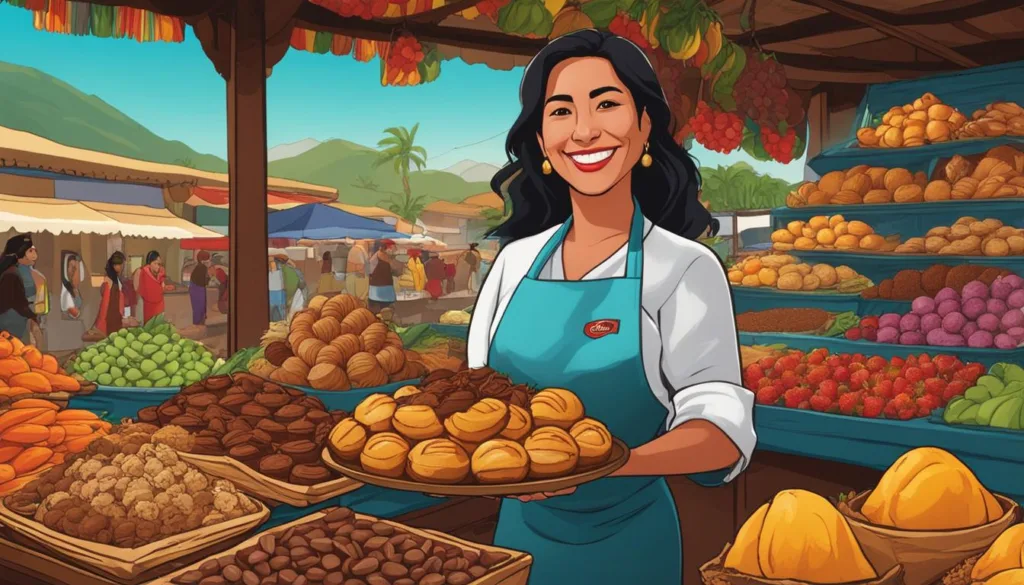
The Role of High-End Restaurants in Ecuador’s Culinary Reputation
Nuema, nestled in the heart of Quito, stands at the forefront of an elite group of dining establishments heralding Ecuador’s high-end gastronomic revolution. Eateries like Tributo, Kriollo, and Casa Julian attract culinary aficionados, offering sophisticated interpretations of classic dishes. These venues, complemented by the artistry of famed chefs like Carolina Sanchez, bring Ecuador’s authentic dishes to the global gourmet landscape. It’s in these intimate settings where the country’s local ingredients shine, translating into experiences that resonate as much for their cultural authenticity as for their delectable flavors.
- Nuema Restaurant – A canvas for culinary innovation in Quito
- Tributo – Where Ecuador’s culinary heritage meets modernity
- Kriollo – Traditional flavors reimagined with a contemporary twist
- Casa Julian – Showcasing the depth of Ecuadorian gastronomy
With four coveted venues leading the pack, Ecuador sets a formidable benchmark, making a compelling case for itself as a top culinary travel destination.
A Taste of Tradition: Exploring Quito’s Culinary Delights
Quito, Ecuador’s proud capital, is a treasure trove for those eager to uncover the rich tapestry of flavors embedded in its culinary traditions. This picturesque city boasts a variety of popular dishes in Ecuador, serving up both time-honored recipes and innovative new twists that continue to shape Quito’s culinary scene. What makes Quito a food lover’s paradise is the seamless blend of traditional recipes and contemporary flare, ensuring each dish tells a part of Ecuador’s storied gastronomic narrative.
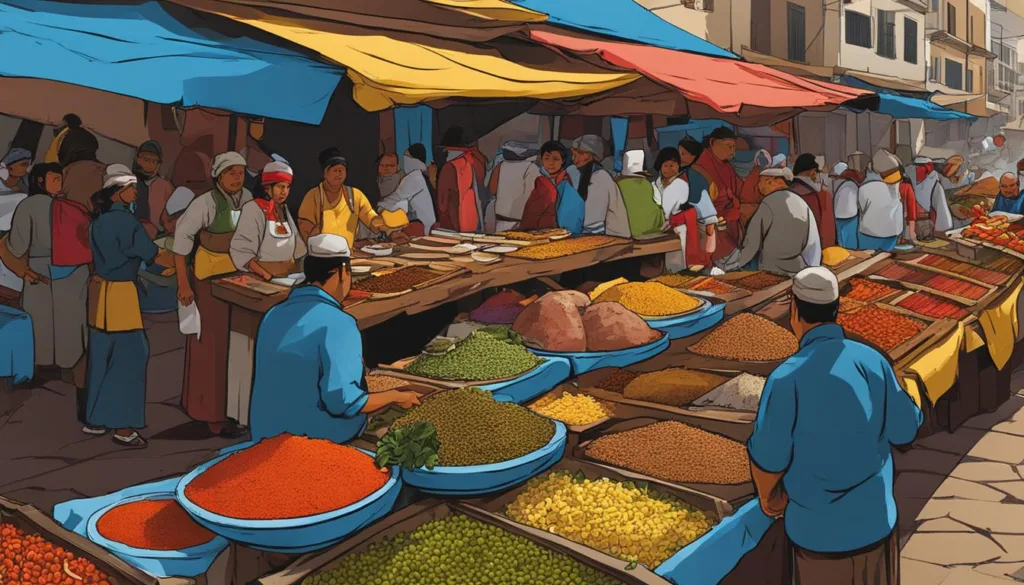
For connoisseurs of authentic cuisine, Quito’s restaurants do not disappoint. One can find an array of traditional recipes from Ecuador gracing the menus, with chefs passionately preparing dishes that have been passed down through generations. Strolling through the city’s bustling food markets and quaint side streets, the aromas of comforting soups, grilled meats, and fresh-baked bread create an irresistible pull for anyone looking to satiate their appetite.
- Ceviche: A zesty delight, featuring fresh seafood “cooked” in a tangy lime juice, is a must-try for visitors.
- Locro de Papa: A hearty potato-based soup, often enriched with cheese and avocado, mirrors the warmth of Quito’s hospitality.
- Empanadas de Viento: These light, fluffy pastries filled with cheese and topped with sugar showcase the sweet side of Ecuador’s savory cuisine.
These dishes, among others, capture the essence of the nation’s diverse food culture, combining native Andean ingredients with influences from other regions and cultures.
Quito’s cuisine is not just food on a plate; it’s a vibrant expression of history, culture, and community. – Local Quito Chef
Whether you’re dining at the acclaimed Nuema, exploring the artisanal offerings at Kriollo, or sampling the street food delights around Plaza Grande, each experience contributes to the unforgettable montage that defines Quito’s dining landscape. Amid the backdrop of colonial architecture and Andean peaks, every culinary adventure in Quito is a celebration of Ecuador’s bountiful heritage.
The Coastal Gastronomy of Ecuador: A Seafood Lover’s Haven
Embracing the riches of the sea, coastal Ecuadorian gastronomy is a fusion of indigenous traditions, a cornucopia of fresh ingredients, and the bountiful offerings of the Pacific Ocean. Visitors to Ecuador’s shoreline are invariably drawn to the bold flavors and innovative culinary techniques that define the nation’s Ecuadorian seafood dishes. Let’s dive into the vibrant world of Ecuador’s Pacific coast cuisine, where every bite resonates with the essence of the ocean.
The culinary journey along the coast treats the palate to an experimental blending of local herbs and spices with freshly caught treasures from the sea. Herein, the beloved classics such as Encebollado and Encocado are more than mere meals; they represent a storied tradition of generations of coastal communities.
| Dish | Key Ingredients | Flavor Profile |
|---|---|---|
| Encebollado | Tuna, yuca, onion, tomato, fresh herbs | Rich, aromatic, comfortingly warm |
| Encocado | Seafood, coconut milk, coriander, bell pepper | Creamy, sweet, mildly spiced |
| Ceviche de Camaron | Shrimp, lime juice, red onions, cilantro | Tangy, refreshing, herbaceous |
One cannot discuss coastal Ecuadorian gastronomy without mentioning the nation’s signature dish, Ceviche de Camaron. This citrus-infused marvel is a testament to the simplicity and elegance of Ecuadorian seafood dishes. Infused with lime and festooned with cilantro, it’s a dish that dances on the palate with every bite.
- Encebollado – hailed as the ultimate hangover cure, this hearty fish stew encapsulates the robust spirit and resilience of the coast.
- Encocado – a coconut milk-enriched symphony, which unites land and sea to culminate in a delicate yet deeply satisfying taste experience.
- Ceviche de Camaron – a cold dish that brings forth the freshness of the ocean with every spoonful, invigorating the senses with its zest.
It is within these dishes that the soul of Ecuador’s Pacific coast cuisine is utterly revealed—each a narrative of the region’s dynamic character and its people’s intimate connection with the maritime lifeway.
Savoring these dishes is more than just a meal—it’s partaking in a story that’s been told since the waves first lapped the Ecuadorian shore.
Savoring the Andean Heights: Unique Dishes from Ecuador’s Sierra
As you ascend the Ecuadorian Andes, the air fills with the aromas of Ecuadorian Andean recipes, a testament to the rich Andes mountain cuisine. The highlands are a treasure trove of traditional Ecuadorian highlands food that tempts visitors with hearty and earthy flavors deeply rooted in the land’s culture and tradition.
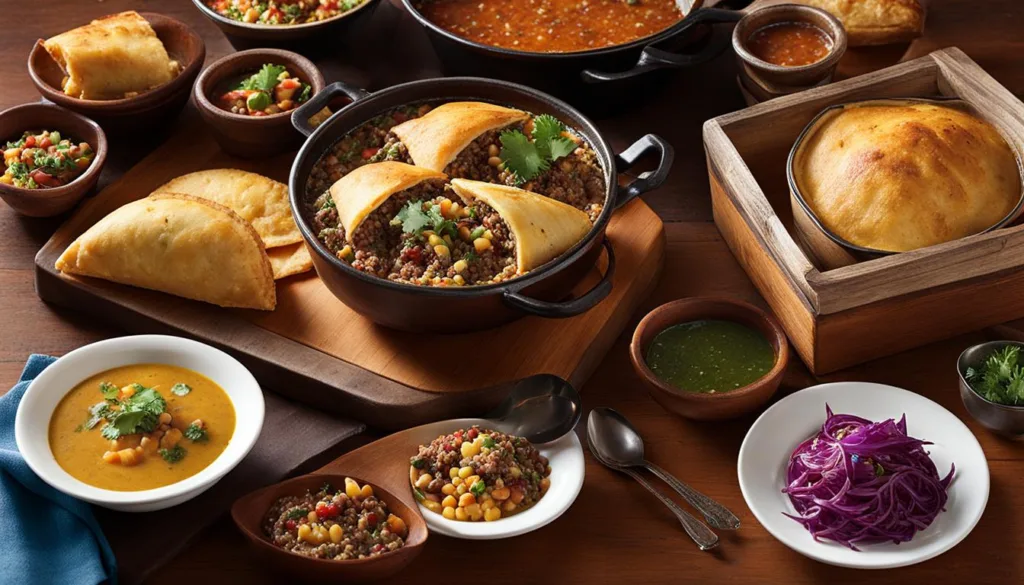
From the peaks of Cotopaxi to the valleys of Imbabura, each dish tells a story of survival, community, and the ingenious use of the resources available in the high altitudes. Here, the staples of corn and potatoes are not merely sustenance but a canvas for a variety of delightful and comforting dishes. This section explores some of the most cherished dishes in the Andean region of Ecuador.
“The magic of Andean cooking lies in its simplicity and the depth of flavor achieved with few but fresh ingredients. One of our greatest joys is sharing our traditional highlands food with the world.”
Among the myriad of dishes that define the mountainous region, here is a closer look at a select few that have become iconic of the Ecuadorian Andes experience:
| Dish | Main Ingredients | Description |
|---|---|---|
| Locro de Papa | Potatoes, cheese, avocado | A creamy soup that combines the earthiness of potatoes with the richness of cheese, often served with a slice of ripe avocado. |
| Fritada | Pork, onions, beer | Fritada involves simmering pork in a blend of onions and beer until tender, then frying it to a golden crisp. |
| Llapingachos | Potatoes, cheese, achiote | These are potato pancakes stuffed with cheese and cooked with achiote oil, offering a savory, cheesy experience with a hint of nuttiness. |
The Andean cuisine, with its comforting bowls of Locro de Papa, the succulence of Fritada, and the cheesy goodness of Llapingachos, provides a culinary journey through the lush landscapes and rich cultures of Ecuador’s mighty mountains. The interplay of simple ingredients brought together with traditional techniques makes the cuisine of the Ecuadorian highlands unforgettable and deeply satisfying.
- Ecuadorian Andean recipes incorporate ingredients that thrive in the mountain climate, ensuring a fresh and vibrant local culinary scene.
- Andes mountain cuisine reflects the harmonious relationship between the land and its inhabitants, where food practices are passed down through generations.
- Traditional Ecuadorian highlands food offers up a hearty fare ideal for the cool, crisp climate of the Sierra with its nurturing and soul-warming dishes.
Into the Wild: The Amazonian Influence on Ecuadorian Cuisine
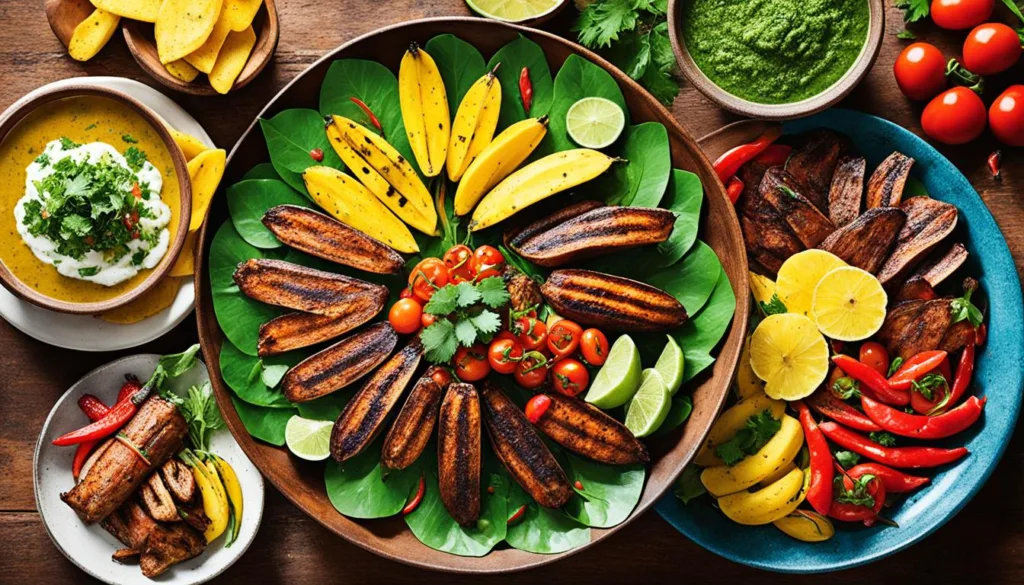
The verdant expanse of the Amazon not only thrives as a biodiverse sanctuary but also significantly imprints its essence on the unique Amazonian Ecuadorian cuisine. The use of exotic ingredients from the Amazon, coupled with age-old cooking traditions, delivers a taste experience that’s both authentic and adventurous.
From the riverbanks to the forest floor, traditional Amazonian recipes embrace the full spectrum of nature’s pantry. Here, the complexity of flavors arises from a deep understanding and respect for the natural surroundings, merging both nourishment and culture.
| Ingredient | Description | Dish |
|---|---|---|
| Piranha | A sharp-toothed fish known for its delicate white flesh. | Piranha Soup |
| Chontacuro | A nutritious Amazonian worm, often grilled or fried. | Grilled Chontacuro |
| Guayusa | A native leaf that’s steeped into an energizing herbal tea. | Guayusa Tea |
| Yucca | A starchy root similar to potatoes; a versatile staple food. | Casabe (Yucca Bread) |
Among the lineup of Amazonian Ecuadorian cuisine, Maito stands out as a dish where fish is expertly wrapped and cooked in aromatic leaves, while Ayampaco showcases a combination of fish or meat with vegetables, wrapped and steamed to succulent perfection.
- Maito: Typically made with tilapia or another river fish, wrapped in bijao leaves and roasted slowly over a grill.
- Ayampaco: Hearty parcels of protein and veggies, steamed within the confines of a plant leaf – an unwrapping reveals the moist and tender treat.
Whether it’s through the smoky flavor of tenderly grilled fish or the rustic charm of a herbal infusion, the spirit of Amazonia is vividly alive in each bite and sip. Embarking on a gastronomic journey through Ecuador’s Amazon region leads to an unparalleled discovery of indigenous cooking lore and the unyielding bond between people and their environment.
Galapagos Gastronomy: An Uncharted Culinary Experience
When it comes to the Galapagos culinary tradition, what often springs to mind is the unique geographic and ecological context that has shaped its cuisine. These enchanting islands, renowned for their unique wildlife and pristine ecosystems, also harbor an evolving gastronomic narrative infused with sustainability and the ingenious use of fresh ingredients. While the islands may have not developed their own traditional dishes, they present a captivating cuisine influenced by Ecuadorian recipes in the Galapagos.
One can immediately notice the seamless blend of island simplicity and sophisticated culinary techniques that earmark the unique tastes from the Galapagos Islands. In particular, the resourceful use of the ocean’s bounty embodies the spirit of Galapagos cuisine. Fresh catches of the day, including tuna, wahoo, and lobster, are key components of these delicate yet flavorful offerings, gracing the tables of both intimate local eateries and upscale dining destinations alike.
Fascinating adaptations of mainland dishes, like the citrus-kissed ceviche, underscore the local palate’s inclination towards bright, refreshing flavors. The Galapagos’ version often features a medley of freshly caught seafood, enhanced by homegrown herbs and spices—illustrating a reverent approach to both tradition and innovation.
- Ceviche de Galapagos: A tangy and tender seafood delight, capturing the essence of the sea.
- Ensalada de Lobster: Freshly harvested Galapagos lobster served atop crisp greens.
- Arroz Marinero: A hearty combination of rice and diverse seafood, reflecting the islands’ plentiful ocean resources.
Despite the limited agricultural landscape, the Galapagos community creatively ensures the prominence of sustainable and locally-sourced ingredientes in their culinary practices. This vision resonates with visitors who come seeking both adventure and authenticity, emphasized by the distinctive flavors served up amidst the archipelago’s volcanic terrain and azure waters.
The Preservation of Ecuadorian Cuisine: UNESCO-Protected Food Practices
The storied culinary heritage of Ecuador is a testament to the nation’s cherished traditions and a vital component of its cultural identity. Remarkably, this legacy includes dishes that have merited UNESCO protection, recognized for their intrinsic value and the crucial role they play in fostering sustainable food practices. Among the plethora of Ecuadorian delights, certain recipes stand out, not only for their sumptuous flavors but also for their cultural significance. For instance, Fanesca, a rich stew that is traditionally consumed during Easter, and Colada Morada, a spiced berry drink enjoyed during the Day of the Dead festivities, are stellar examples of how these culinary customs are intertwined with Ecuadorian life.
UNESCO-protected Ecuadorian dishes are more than just food; they encapsulate stories, techniques, and a form of communion that spans generations. These dishes are particularly special as they are typically prepared and savored during emblematic festivals such as the Pre-Hispanic festivity of Muashuk Nina and the Día de los Difuntos. By safeguarding these recipes, Ecuador not only honors its ancestors but also ensures that future generations can access an integral part of their cultural fabric. Efforts to uphold these culinary treasures align with sustainable food practices, as they often involve locally sourced ingredients and time-tested, eco-friendly cooking methods.
Ecuador’s commitment to preserving its culinary repertoire is vital for maintaining the diversity of the country’s gastronomy. As the world becomes increasingly globalized, it is initiatives like these that help maintain the unique character of local cuisines. For travelers and food lovers alike, the opportunity to experience these UNESCO-protected dishes provides a unique insight into Ecuadorian culinary heritage, one that is rich with flavor, history, and heart. In embracing such sustainable practices, Ecuador continues to weave the rich tapestry of its gastronomic narrative, offering a deliciously authentic touchstone to its past and a hopeful nod to its future.
